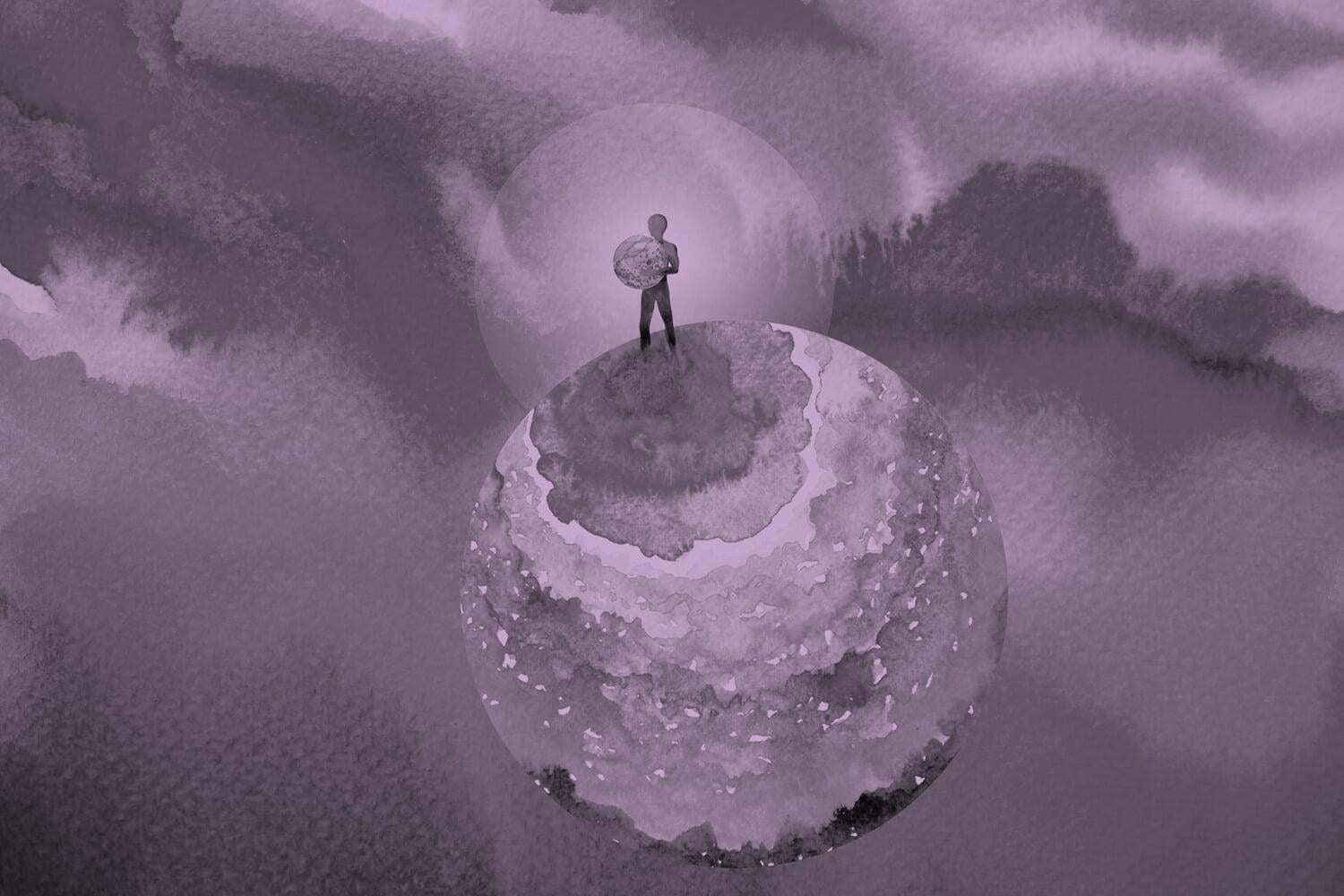
The Pathway to Excellence | Live
Home Life and Finance
What is home life? The way we build a sense of home has a great bearing on our capacity to pursue The Pathway to Excellence. Our work in creating a safe, orderly, and reassuring environment around us is very important. It gives us a secure base from which to operate geographically, socially, emotionally and financially. It gives us a place where we belong, a place in which we might invest, and a place where our love can reside and be nourished.

A PLACE TO CALL HOME
All of us need a place we can call “home”. A home is more than just the place where we live. A home is both where we feel we belong and where things are in their right place. It is the accumulation of the way we invest ourselves emotionally and materially in a place, and the structures, traditions, and routines we create along the way to bring comfort and familiarity to such a place.
A home may be shared with others or we may have it to ourselves. Almost all of us begin living with our families until such time as we feel ready and able to locate and inhabit our own homes. The decision to do so is often prompted by the establishment of a serious personal relationship with a partner. While this is not always the case, it is true to that building a home is very difficult (if not impossible) unless we find the means to pay for it and everything in it, as well as all of our activities as we go on this an adventure that is both ordinary and great at the same time.
A home, therefore, is a place which we choose to become meaningful for us in a way that other places are not. It is the source of pretty much all of the things we need to meet our physical and security needs. It represents for many the place of family and relationships. It is, therefore, a place in which we belong and can seek respite from the outside world. It is a place where we might fulfil much of our potential, and a place in which we might earnestly claim to be doing something that is good and right. Home is thus most likely inseparable from our sense of identity and the character and competencies that contribute to this.
“I live inside my house as I live inside my skin. I know more beautiful, more sturdy and more picturesque skins, but it would seem unnatural to exchange them for mine.”
Primo Levi
THE CHOICE OF HOME AND LIFESTYLE
Each one of us needs to make choices about where we want to live, with whom we want to live, and how we will live our lives in those places and with those people. It is natural for us when we are little children to treasure our homes and our families, just as much as it is for us to want to separate ourselves from them when we are adolescents. We are biologically hard-wired to be nurtured in childhood in a place that is chosen for us by our family and then later to seek out a place of our own in which we might do the same. Not all of us follow the same path and different cultures around the world have established different ways to think about family, home and the relationship between the two. In the same way, people around the world think about age and generations differently, especially when it comes to identifying how and when children go off on their own, and how frequently they return to pay their respects to and care for the family from which they came. And, of course, not everyone has a family or feels welcome in their own family of birth.
How we think about family, relationships and lifestyle affects our choice of home. We should think first about how we want to live our lives before we identify a physical place that will become the place in which (for most of us) we will invest the most personally and financially. We need to consider what type of place and what facilities will enable us to do the things we want to be able to do. We need to be able to predict how this place might be able to be adapted to changes in our lifestyle or how long we might want to stay there before we move on to a place that might suit future needs better.
These choices allow us to think through the amount that we wish to put into the house, or apartment, or room that we live in right now. For a piece of property is only a place that might become home, should we choose to make it so and should we develop the capacity to support ourselves in it. This choice can happen gradually over time; there is no need to commit fully all at once. Many people do take time to grow accustomed to a place and to explore the possibilities that living in it might bring. Others can jump into an arrangement much more quickly and then adjust their expectations subsequently when they have a lived experience to give substance to their hopes and dreams. Usually, a normal life is never quite what you hope for but is also the sum of more than you might have expected to begin with, if that makes sense. A sense of home comes with the realisation of a life lived in it, with all of its successes and failures, triumphs and disasters. It feels real and it feels like your place because you have made it so with the many, many conscious and unconscious choices, both small and big, that you have made along the way.
THE STRUCTURES OF HOME
All of us need some sort of structure in our lives. We rely on the physical structure of a home to give us a place of shelter from the elements, a place where we might find rest and relief from the pressures and expectations of the outside world, a place where we can mix with those who are closest to us. The physical organisation and appearance of our home also brings with it the capacity to promote our esteem and status. We feel better when things are tidy, when we have made something work, and when we have helped someone else. We feel good also when we make home look good. What a home looks like helps us to match its aesthetic to our own personal preferences; at the same time, it also helps us to locate ourselves in society. People commonly see their home as a reflection of who they are. Other people will also see the homes of their friends, family and neighbours in the same way. This may result in habits of comparison and competition which are not always healthy.
Instead, it may be better for us to think of home as a place in which the physical and behavioural structures that we create give us predictability and comfort. The choices we make about our lifestyles within our homes also help us to create the structures and routines that bring with them safety and security. We need the physical structure to have facilities that are delineated according to their function and the people who use them. We need to know what is ours, what we can do with it, and how and when we need to share what we have with others. What we do at home is, for the most part, what home is and what it becomes: a mixture of territory, material resource and human activity through which we can create the atmosphere of intimacy and habits of living that emerge from the sum of our choices, both wise and unwise. These choices are made in response to many stimuli and pressures. There are four common and practical sources of worry and anxiety connected with home life which, for the most part, will make or break our capacity to create a happy and functioning home for ourselves: accommodation, employment and earning capacity, finances and debt, and time management. We will explore these elsewhere.
For the moment, it is worthwhile spending some time thinking about the social basis for the choices that we make. Structure gives us a way to make sense of the passing of time – yesterday, today and tomorrow. These are the narratives we build up that become the enduring stories that we tell each other to explain who we are, what our place in the world might be, how we can best connect with and help others, and what our purpose might be. They are also the routines that bring us the reassurance of predictability that contributes to our feeling of security and what we might do with this. On Tuesday nights, we take the garbage out and on Sunday nights in summer we gather for a barbecue. We have seen elsewhere in The Pathway to Excellence that developing a sense of what your own rules for life might be is essential if we are going to become the best version of ourselves. We need to know, therefore, what is good and right to us and for us. In the same way, we need to understand that in a home, we develop mutually supportive and agreed rules about how we relate to one another.
Structure also gives us rules which help us all to be the best people we can be and get along with each other. We wash our hands before dinner and we share the household chores evenly. We have a place where we work that is separate from the place where we sleep and play. Our structures for behaviour become routines that are as much a part of home as anything else. How we celebrate, how we resolve conflict, how we treat each other with respect, how we care for those in need, how we correct those who have erred – all of these are part of a code that we develop to make our home a place whose structures serve everyone as best as possible. This does not of course guarantee that all will go well. All people are imperfect. By definition, their homes will be as well. Ultimately, what makes a place a home is the love that is housed within it. Our gift of love is an act of free will. It is a choice that we make to bring both joy and practical rewards to ourselves and to others without expectation of gaining something in return. It takes us beyond a series of simply functional exchanges and transactions to a place where we know that we are loved for our own sake. It is love that transforms property into something much greater: home.
LOCATING HOME IN OUR LIVES
In the end, we believe that everyone can live a successful life when they develop practical approaches to making the most of the opportunities and challenges, and solving the problems caused by the risks and stresses posed to them by:
- Building secure accommodation for yourself and your loved ones – how you select a safe and potentially happy place that you can call home and establish the lifestyle, routines and physical appearance that will give you a sense of belonging
- Adopting an approach to establishing and maintaining your employment and earning capacity – how you go about qualifying for and finding meaningful employment that will support your chosen lifestyle in a way that is both morally and ethically in accordance with your values and beliefs
- Working through the best ways to manage your finances and personal debt – how you make specific choices about what level of personal debt you will and will not take on to support the lifestyle that you might choose to lead
- Locating your home life within a practical approach to your time management – how you place what you are doing and achieving in your life within the context of the time that is available to you and your choices about how best to spend it







